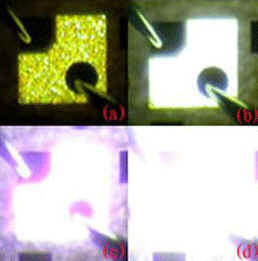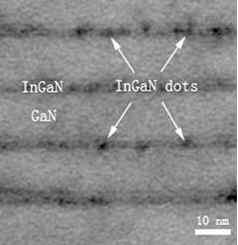
Privacy statement: Your privacy is very important to Us. Our company promises not to disclose your personal information to any external company with out your explicit permission.
Light-emitting diodes play an important role in solid-state lighting projects. In the next 5-10 years, they will gradually replace traditional lighting fixtures and become a new light source for energy saving and environmental protection. Compared with traditional light sources (incandescent lamps, fluorescent lamps, halogen lamps, etc.), LED light sources have many advantages, such as long life, small size, low power consumption, low environmental pollution, high electro-optical conversion efficiency, good applicability and safe use. Wait. With the development of GaN-based III-V compound technology and the realization of blue LEDs , three primary color light emitting diodes that realize white light have been available. Generally, the methods for obtaining white light-emitting diodes are as follows: 1) blue light-emitting diodes + yellow phosphors; 2) multi-chip combination, that is, three red, green and blue cores are combined; 3) photon circulation realizes white light illumination 4) A quantum well mode with different emission wavelengths grown on the same substrate. However, the above methods for obtaining white light are complicated in technology, high in production cost, and have many difficulties to be overcome. Therefore, people have been working hard to realize a single-chip white light-emitting device capable of avoiding these problems, and theoretically predict the feasibility of such a device. Sex. However, although the technology of GaN-based blue and green light-emitting diodes has become increasingly mature and commercialized, achieving single-chip white light illumination has become a scientist's dream. In 2006, Chen Hong, a physics institute from Taiwan, used InGaN's stress modulation layer to achieve stress modulation and control of InGaN/GaN multiple quantum wells, and successfully developed a single-chip white light-emitting device. This method does not require phosphors and does not require the addition of complex control circuitry. The fabrication process is similar to conventional LEDs. At a conventional injection current (20 mA - 60 mA), the color rendering index of white light is almost constant. Figure 1 shows the change in illuminating color at different injection currents. Figure 2 shows a cross-section electrical image of the InGaN/GaN active region.

Figure 1. Photograph of a single-chip white light-emitting diode with different injection currents: (a) 1 mA, (b) 5 mA, (c) 20 mA, (d) 60 mA

Figure 2. Transmitted electron microscope cross-section picture of the light-emitting diode InGaN/GaN active region
Electroluminescence studies have shown that LEDs emit yellow light at low currents. As the current increases by more than 20 mA, the intensity of the blue light gradually increases, and the outgoing light gradually transitions from yellowish light to white light. A transmission electron microscope cross-section shows the formation of a large number of In-rich quantum dots in the InGaN quantum well. At low injection current, carriers are first captured by the In-rich quantum dots to emit yellow light. As the current increases, the quantum well regions outside the quantum dots begin to capture carriers, and after radiation recombination, blue light, blue light and yellow are emitted. Light mixing produces white light.
Source: Applied Physics Letters 91,161912 (2007)
November 21, 2022
September 29, 2022
August 10, 2024
April 30, 2024
September 29, 2024
November 18, 2023
Gửi email cho nhà cung cấp này
November 21, 2022
September 29, 2022
August 10, 2024
April 30, 2024
September 29, 2024
November 18, 2023

Privacy statement: Your privacy is very important to Us. Our company promises not to disclose your personal information to any external company with out your explicit permission.

Fill in more information so that we can get in touch with you faster
Privacy statement: Your privacy is very important to Us. Our company promises not to disclose your personal information to any external company with out your explicit permission.